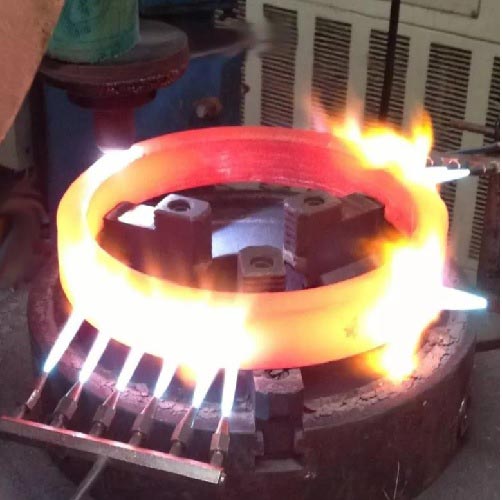HY-industry:One company of Specialist for stellite(HY-Technology center)
A.Overview
 HY-industry was founded in March 1990. It was founded by Ms. Grace and Mr. Ferguson with a registered capital of 50 million RMB. The product range of HY stellite series products involves military, aerospace, machinery manufacturing, petroleum and petrochemical, coal mining. Mining, metal addition, spraying and other industries.
HY-industry was founded in March 1990. It was founded by Ms. Grace and Mr. Ferguson with a registered capital of 50 million RMB. The product range of HY stellite series products involves military, aerospace, machinery manufacturing, petroleum and petrochemical, coal mining. Mining, metal addition, spraying and other industries.
In 1907, American Elwood Hayness, based on C, W, Cr, and Co, was able to rely on carbide strengthening to a large extent, and the structure was stabilized from room temperature to melting point temperature, creating a stellite. Especially on the sliding and contact valve sealing surfaces, it can show the characteristics of this material. However, in the case of high-stress abrasive wear, the wear resistance of Co, Cr, and W alloys with low C is not as good as that of low carbon steel.
The most commonly used ones are stellite1, stellite6, stellite12, and Stellite21. They are cast low-carbon, medium-carbon, high-carbon cobalt-chromium-tungsten alloy surfacing wire. The surfacing layer has good corrosion resistance, heat resistance and wear resistance. These properties can be maintained at 800 °C.
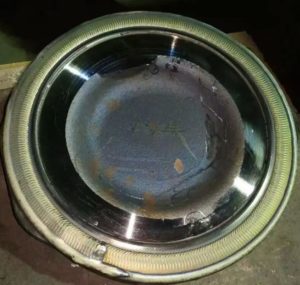
-
Stellite 1: contains the highest amount of C and W, so the hardness is the highest, the wear resistance is very good, but the impact resistance is poor, the plasticity is the worst, the whole heating is required during welding, the small current is fast welded, the weld bead is prevented from deforming, and the stress cracking is formed.
-
Stellite 6: contains C and W at the lowest and is the best toughness. Therefore, it can withstand the impact under cold and hot conditions, and the possibility of cracks is small.
-
Stellite 12: contains C, W centered, medium hardness, wear resistance is better than stellite6, but the plasticity is slightly worse. Both can be cut with a carbide tool, and the metallographic structure is a solid solution (austenite) containing W, Cr, Co and a chromium-tungsten composite carbide eutectic.
-
Stellite 21: contains up to 5.5% Mo. It is a low carbon cobalt-chromium alloy strengthened with Mo. It has low hardness at room temperature, but has improved hardness after cooling. It has good high temperature corrosion resistance, erosion resistance and excellent toughness. And comprehensive mechanical properties, suitable for surfacing welding of various hot stamping dies.
B.chemical composition %
| Stellite1(UNS R30001) | Stellite6(UNS R3006) | Stellite12(UNS R30012) | Stellite21(UNS R30021) | |
| C | 2.40 | 1.15 | 1.4 | 0.25 |
| Cr | 30.5 | 29.0 | 29.5 | 27.5 |
| Si | 1.00 | 1.10 | 1.45 | 2.00 |
| W | 12.5 | 4.00 | 8.25 | 0.15 |
| Fe | 3.00 | 3.00 | 3.00 | 2.00 |
| Mo | 1.00 | 1.00 | 1.00 | 5.50 |
| Ni | 3.00 | 3.00 | 3.00 | 2.50 |
| Co | 余量 | 余量 | 余量 | 余量 |
| Mn | 0.25 | 0.5 | 1.00 | 1.00 |
| HRC | 48 | 38 | 42 | 28 |
C.Welding Surfacing
Oxyacetylene surfacing or powder plasma surfacing can be used. The oxyacetylene stack is hardly diluted by the base metal, so the quality of the surfacing layer is very good. It is mostly used for surfacing the stellite6 alloy with lower carbon content, which can increase the carbon content of the surface of the surfacing base material and reduce the melting point of the surface of the workpiece. And wetting temperature makes stacking easy.
For thicker workpieces, preheat to 400 °C with a neutral flame to prevent slow cooling after splitting. If powder plasma surfacing is used, pre-weld preheating, post-weld insulation and slow cooling are all critical. According to the advantages and disadvantages of various surfacing methods, the surfacing method should be determined and reasonable welding process parameters should be selected to effectively avoid the generation. crack.
1.Oxyacetylene surfacing
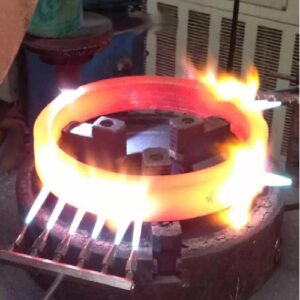
-
Surfacing welding with oxyacetylene carbonized flame, the ratio of the length of the flame to the inner flame should be kept 1:3.
-
The corners of the welding surface are processed into rounded corners, and the oxides and oil stains on the surface of the base metal are removed and then welded.
-
The appropriate preheating temperature should be selected according to the type of base metal and the size of the workpiece, generally 400 ~ 600 °C.
-
The surfacing workpiece must be placed in a dry and preheated sand tank or lime immediately to allow it to cool slowly to avoid cracking.
-
If a crack is found, the crack source needs to be completely removed, and repair welding is performed according to the original overlay welding process.
2.Cobalt-based powder plasma surfacing
-
Strictly remove oxides and oil on the surface of the workpiece before surfacing. The control surfacing dilution rate is less than 5%, the surfacing thickness is ≤6.0mm, and the surfacing welding width is 3~8 mm. The cobalt-based powder plasma surfacing layer is used in the as-welded state and cannot be strengthened by heat treatment. Therefore, cobalt-based cemented carbide is prone to cracking during surfacing.
-
After welding, it is cooled in lime. For larger workpieces, it is necessary to preheat 500~ 550 °C, and then heat it in the furnace for a certain period of time before cooling.
-
The size and distribution of the carbide (Cr7C3) particles in the cobalt-based stellite alloy and the grain size are sensitive to the casting process. In order to achieve the required permanent strength and thermal fatigue properties of the cast stellite parts, the casting process must be controlled. parameter. The stellite alloy needs to be heat treated, mainly to control the precipitation of carbides. For the cast stellite alloy, the high temperature solution treatment is first carried out, and the temperature is usually about 1150 ° C, so that all the primary carbides, including some MC type carbides, are dissolved in the solid solution, and then aging treatment is performed at 870 to 980 ° C to make Carbides (most commonly M23C6) are re-precipitated.
3.Sealing surface surfacing
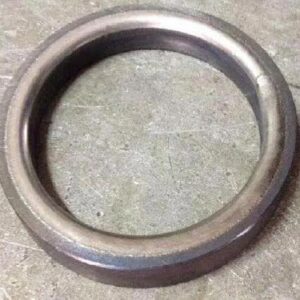 A large number of surfacing processes are used in the valve sealing surface structure, and a sealing surface with higher hardness, higher erosion resistance and wear resistance can be obtained by the surfacing process, and the sealing surface after surfacing is also easier to grind.
A large number of surfacing processes are used in the valve sealing surface structure, and a sealing surface with higher hardness, higher erosion resistance and wear resistance can be obtained by the surfacing process, and the sealing surface after surfacing is also easier to grind.
Among the common surfacing materials, there are two types of welding consumables which are used in the sealing surface of the valve:
13Cr surfacing electrode and welding wire, mainly include:
-
D502\D507\D507Mo
-
D512\D577\D547\D547Mo etc.
Cobalt-based hard alloy electrodes and welding wire, mainly include:
-
D802(Stellite No6)
-
D812(Stellite No2)
-
HS111(Co106)
-
HS112(Co104) etc.
The hardness and operating temperature range that can be obtained by different surfacing materials are as follows:
| Grade | Standard | Hardness of the surfacing | Surfacing height | range of application | welding method |
| D502 | GB/T 984-2001 | ≥40HRC | ≥4mm | PN≤20MPa t≤450 |
manual arc welding |
| D507 | |||||
| D507Mo | ≥37HRC | PN≤20MPa t≤510 |
|||
| D512 | ≥45HRC | PN≤30MPa t≤450 |
|||
| D517 | |||||
| D547 | 270~320HB | PN≤30MPa t≤570 |
|||
| D547Mo | ≥37HRC | PN≤35MPa t≤600 |
|||
| D802 | ≥40HRC | PN≤60MPa t≤670 |
|||
| D812 | ≥44HRC | better than D802 |
In addition to the materials listed above, the hardness of the Stellite series of surfacing materials used in the surfacing of safety valve sealing surfaces is as follows:
-
Stellite NO.1:50~55HRC
-
Stellite NO.6:40~45HRC
-
Stellite NO.12:44~49HRC
-
Stellite NO.31:30~35HRC
In order to ensure that there is no annular indentation, the conventional sealing surface usually requires a hardness difference of 5-10 HRC between the sealing faces (width hard and soft), and the hardness difference can be obtained by using different grades of surfacing materials. Therefore, the sealing surface of the safety valve is usually surfacing using different surfacing materials.
The welding process shall be based on JB4708 “Steel Pressure Vessel Welding Process Evaluation” and other corresponding standards for welding process evaluation. The welding process that meets the requirements is the prerequisite for ensuring the quality of surfacing.
Surfacing is one of the welding methods. It has very high requirements on the welding process. Unreasonable welding process will lead to cracks on the surface of the surfacing. The occurrence of cracks will directly lead to the leakage of the sealing surface and even the loss of the surfacing layer.
In order to prevent the occurrence of weld cracks on the sealing surface of the safety valve, the safety valve manufacturer will detect whether there is crack on the sealing surface after the sealing surface is finished (visual inspection, PT detection, RT detection) In order to solve the problem of weld overlay cracks, common measures include:
-
increase the preheating temperature of the workpiece
-
Improve the tempering temperature of the workpiece after welding
-
change the shape of the welded structure and improve the stress distribution
-
use small diameter electrode and use small current, has reduced heat input
-
Adjust the arc closing method to solve the arc pit crack.
However, in the actual use process, it was found that some products did not have cracks on the sealing surface at the time of leaving the factory, but after a period of use, a large number of cracks appeared at the sealing surface of the sealing surface, resulting in aggravation of leakage of the sealing surface, and in many cases, the crack depth was large. Cannot be repaired by grinding.
The cracks that occur after a period of use are mainly hydrogen-induced delayed cracks (individual understanding is uncertain). Such cracks are mainly caused by the diffusion and segregation of hydrogen in the weld metal during the welding process to the heat-affected zone, and the enrichment of hydrogen leads to the occurrence of initial defects.
As the use time is extended, the enrichment of hydrogen will be further strengthened (the diffusion of hydrogen is more severe at high temperatures), and finally the occurrence of cracks under the action of hardened structure and stress concentration. The prevention of such cracks is mainly ensured by the process and quality system. (For the safety valve manufacturer, it is especially important for the drying of the welding consumables and the cleaning of the groove)
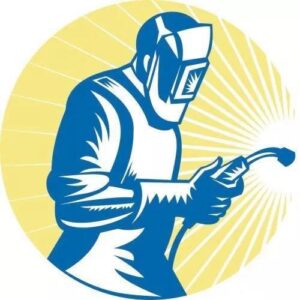 D.Stellite series welding wire:
D.Stellite series welding wire:
1.Stellite Cobalt-based No.1 wire:
Equivalent to AWS ERCoCr-C
Main features and applications:
High carbon Co-Cr-W alloy surfacing wire has good wear resistance and corrosion resistance. But the impact toughness is poor. It is mainly used for surfacing welding of wear parts such as cone bit bearings and boiler rotating blades.
Hardness HRC of surfacing layer: ≥52
2.Stellite Cobalt-based No.1 wire:
Main features and applications:
Used for high wear resistance, excellent high temperature strength and corrosion resistance. For copper, aluminium alloy hot pressing die, hot extrusion die, dry battery die, etc.
Hardness of surfacing layer HRC:46-50
3.Stellite Cobalt-based No.6 wire:
Equivalent to AWS ERCoCr-A
Main features and applications:
Co106 Co-based surfacing wire is one of the lowest C and W contents and the best toughness in Co-Cr-W surfacing alloy. It can withstand the impact of cold and hot conditions, has a small tendency to produce cracks, and has good corrosion resistance, heat resistance and wear resistance. Mainly used for maintaining good wear and corrosion resistance at high temperature, such as high temperature, high pressure valves, hot shear blades, hot forging dies, etc.
Hardness of surfacing layer HRC:40-45
4.Stellite Cobalt-based No.12 wire:
Equivalent to AWS ERCoCr-B
Main features and applications:
Co112 cobalt-based surfacing wire has medium hardness and better wear resistance than HS111 in Co-Cr-W surfacing alloy, but its plasticity is slightly worse. It has good corrosion resistance, heat resistance and wear resistance, which can be maintained at about 650 C. Mainly used for surfacing welding of high temperature and high pressure valves, internal combustion engine valves, high pressure pump sleeves, liner sleeves, hot roll pass, etc.
Hardness of surfacing layer HRC:45-50
5.Stellite Cobalt-based No.20 wire
Main features and applications:
Co120 cobalt-based surfacing wire has high hardness and good wear resistance, but poor impact resistance. It is prone to crack during surfacing. It has good corrosion resistance, heat resistance and wear resistance, which can be maintained at about 650 C. It is mainly used for surfacing welding of cone bit bearings, rotating blades of boilers, edges of crushers, screw feeders, etc.
Hardness of surfacing layer HRC:55-60
6.Stellite Cobalt-based No.12 Electrode
Grade:GB/T EDOCR-B-03
Equivalent to AWS ERCoCr-B&JIS-DF CORB
Explanation: Cobalt-based surfacing electrode with cobalt-chromium-tungsten alloy core can maintain good wear resistance and corrosion resistance when the surfacing metal works at 650 ℃
Usage: Used for high temperature and high pressure valves, axle sleeves and inner bushes of high pressure pumps, cutting edges of chemical fiber equipment, etc.
Hardness HRC of surfacing layer: ≥44
E.The cobalt-based surfacing wire products are as follows:
1.HS111 Co-based Wire
Equivalent to AWS ERCoCr-A
Main features and applications:
HS111 Co-based surfacing wire is one of the lowest C and W contents and the best toughness in Co-Cr-W surfacing alloy. It can withstand the impact of cold and hot conditions, has a small tendency to produce cracks, and has good corrosion resistance, heat resistance and wear resistance. Mainly used for maintaining good wear and corrosion resistance at high temperature, such as high temperature, high pressure valves, hot shear blades, hot forging dies, etc.
Hardness of surfacing layer HRC:40-45
2.HS112 Co-based Wire
Equivalent to AWS ERCoCr-B
Main features and applications:
HS112 cobalt-based surfacing wire has medium hardness and better wear resistance than HS111 in Co-Cr-W surfacing alloy, but its plasticity is slightly worse. It has good corrosion resistance, heat resistance and wear resistance, which can be maintained at about 650 C. Mainly used
Surfacing welding of high temperature and high pressure valves, internal combustion engine valves, high pressure pump sleeves and liner sleeves, hot roll pass, etc.
Hardness of surfacing layer HRC:45-50
3.HS113 Co-based Wire
Main features and applications:
HS113 cobalt-based surfacing wire has high hardness and good wear resistance, but poor impact resistance. It is prone to crack during surfacing. It has good corrosion resistance, heat resistance and wear resistance, which can be maintained at about 650 C. It is mainly used for surfacing welding of cone bit bearings, rotating blades of boilers, edges of crushers, screw feeders, etc.
Hardness of surfacing layer HRC:55-60
4.HS113G Co-based Wire
Main features and applications:
The surfacing layer has excellent wear resistance, heat resistance and corrosion resistance. It can also maintain these characteristics at 800 C. The single impact toughness is poor and it is sensitive to the temperature of the surfacing layer. The metallographic structure is eutectic and coarse composite carbide. Mainly used for surfacing welding of pump sleeve and rotary seal ring, wear panel, bearing sleeve, high temperature hot roll, oil field drill bit, etc.
Hardness of surfacing layer HRC:≥54
5.HS113Ni Co-based Wire
Main features and applications:
The welding wire reduces the carbon content properly and adds more Ni and Fe alloying elements, thus improving the toughness and comprehensive mechanical properties of surfacing layer. It is mainly used for surfacing welding of internal combustion engine valves and exhaust valves with high requirements of anti-cavitation and anti-corrosion performance.
Hardness of surfacing layer HRC:37-40
6.HS114 Co-based Wire
Equivalent to AWSRCoCr-C
Main features and applications
High carbon Co-Cr-W alloy surfacing wire has good wear resistance and corrosion resistance. But the impact toughness is poor. It is mainly used for surfacing welding of wear parts such as cone bit bearings and boiler rotating blades.
Hardness of surfacing layer HRC:≥52
7.HS115 Co-based Wire
Equivalent to AWS ERCoCr-E
Main features and applications:
The wire is a low carbon cobalt-chromium alloy strengthened by molybdenum. Its hardness is lower at room temperature, but it is improved after cold work. The surfacing layer has good high temperature corrosion resistance, impact resistance and high temperature strength.
Hardness of surfacing layer HRC:≥27
8.HS116 Co-based Wire
Equivalent to AWSRCoCr-C
Main features and applications
It has high wear resistance and high temperature strength, but poor toughness. It has excellent corrosion resistance under the working conditions of resistance to phosphoric acid and nitric acid. Mainly used for surfacing of copper-based and aluminium-based alloys, such as hot-pressing die, etc.
Hardness of surfacing layer HRC:46-50
9.HS117 Co-based Wire
Main features and applications
It has strong abrasion resistance and corrosion resistance, which can be maintained at 800 C. Surfacing welding for wear surface of pump sleeve and rotary seal ring
Hardness of surfacing layer HRC:≥53

